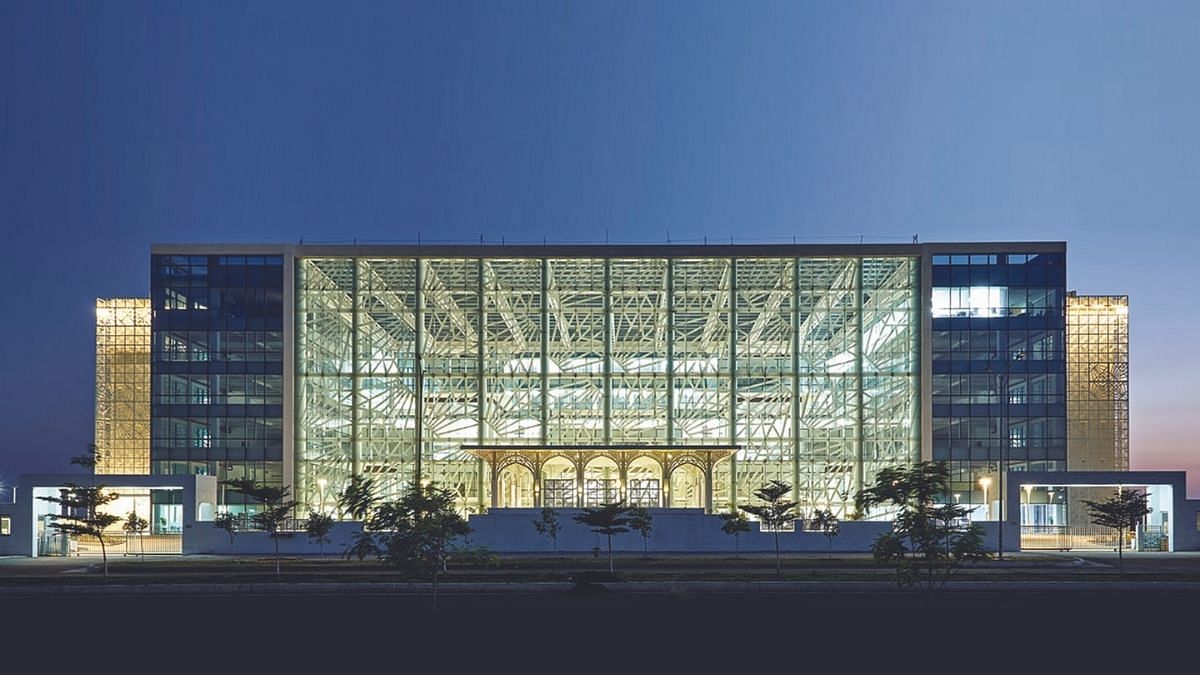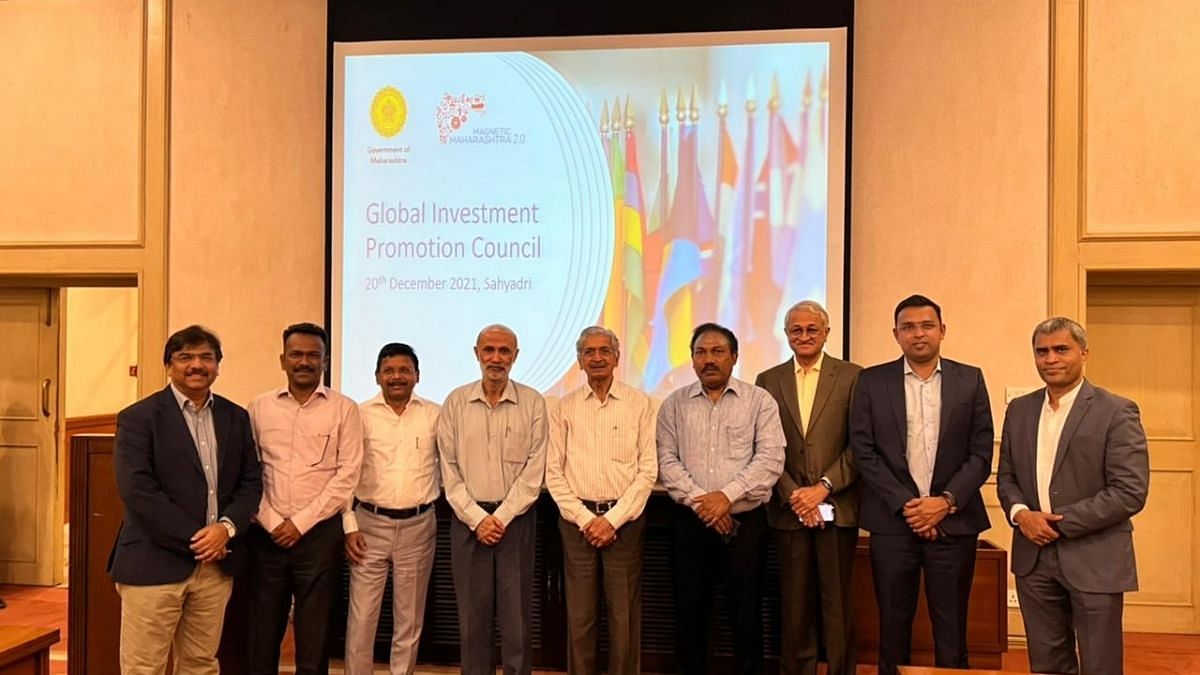The Maharashtra Industrial Development Corporation (MIDC) was set up in 1962 by an Act of the state legislature with a mandate to achieve balanced industrial development in Maharashtra. This special planning body operates through a vast network of local offices, and has 289 industrial parks built over 2.25 lakh acres of land across the state.
Over the past few years, MIDC has focussed on fostering business relationships with
nearly all major trade partners across the world. MIDC’s most important role is perhaps ensuring the availability of encumbrance-free land to the entrepreneurs and industrialists — helping Maharashtra take the leap to become the most industrialised state in India, with the highest contribution to the country’s GDP
MIDC also acts as an important link between investors and the government. It’s the
single point of contact for all investor relations. MIDC administers the investment
lifecycle in the state from outreach to aftercare, and is responsible for providing
essential infrastructure such as land, power, water and more to businesses.
Today, MIDC is developing smart industrial cities and plug-and-play infrastructure, and has established online mechanisms that have drastically reduced the turnaround time for an industrialist to establish and run his or her business.
Apart from being the largest industrial land bank in the country, MIDC autonomously
has the largest supply network of industrial water. Additionally, MIDC is a special
provisioning authority for electricity, which enables an investor to acquire power
connections seamlessly. It’s also much faster to get environmental clearances through
MIDC, thanks to its special cell that helps investors navigate regulatory challenges.
MIDC is also the Government of Maharashtra’s nodal investment promotion agency.
The corporation is not only the country’s largest industrial development authority but
one of South Asia’s most competent investment promotion authorities.

Over the past five decades, MIDC has enabled the state to achieve an undisputed
leadership position with regard to investments and industries. MIDC is constantly working to connect to prospective investors as well as global trade federations, and
communicate to them Maharashtra’s ecosystem for industries. It also provides
handholding to investors via dedicated relationship managers and country desks to
ensure a seamless experience for those investing in Maharashtra.
During the challenging years of Covid-19, under the Magnetic Maharashtra 2.0
programme, MIDC mobilised investments worth Rs. 1.89 lakh crore, which will
potentially generate 3.3 lakh high-quality jobs across the state.
MIDC has been relentless in pursuit of its motto — ‘Prosperity to all via Industrialisation’. Every investment that MIDC has been able to realise brings a multiplier effect to the economy, and generates employment as well as revenue for the state, which will enable the government to further social and infrastructure development.
MIDC has also been developing new and advanced infrastructure facilities across the
state. Specialised markets are being developed across districts to bring suppliers,
producers, sellers, and buyers together. The developmental strategy envisioned under
Magnetic Maharashtra 2.0 ensures balanced regional development.
Developing industrial hubs
A well-rounded approach involving well-developed infrastructure, a large pool of skilled manpower, the presence of prominent educational and research institutions, as well as excellent living conditions, continues to give Maharashtra an edge in attracting global investments.
Developed as part of a Delhi-Mumbai Industrial Corridor spread over 10,000 acres,
AURIC Aurangabad is India’s first smart industrial city for food processing, auto and
components, electronics system design and manufacturing (ESDM), and textiles. It has the unique distinction of being India’s first greenfield industrial smart city with planning for cluster development.
An electronics and engineering smart city is coming up in Talegaon, along with a hi-tech city spread across 15,000 acres in Dighi Mangaon. The state is also in the process of finalising an engineering hub at Khalapur in Raigad and Shahpur in Thane. A dedicated data centre park and integrated logistics park have been envisioned in Taloja, where investors are already flocking.
With Maharashtra’s new IT policy now under approval, many more IT parks and Data
Centre investments are expected in the state. The Nashik- Malegaon-Ahmednagar
region is rapidly developing more than 5,000 acres, with a Japanese industrial township in Supa, Ahmednagar, in addition to Nashik becoming a hub for the aerospace and defence sector. An area of 4,000 acres in the Nagpur-Amravati region is poised to develop further as the epicentre of integrated textile value chain manufacturing.

It’s not just at the state level. Maharashtra is also implementing Government of India initiatives, including an electronic manufacturing cluster — now in its final phases of approval — in coordination with Software Technology Parks of India (STPI), as well as five major multi-modal logistics parks in coordination with the National Highways Authority of India (NHAI).
A favourable policy environment coupled with infrastructure development initiated by the political and administrative leadership have helped the state in achieving this unprecedented growth.
The vision of Maharashtra and MIDC is to establish the state as the preferred investment destination for domestic food processing, textiles, healthcare, auto components, and defence and aerospace manufacturing. It aims to do this by promoting indigenous and modernised technological capabilities, developing world-class skilled manpower, and supporting micro, small, and medium enterprises (MSMEs) to be globally competitive in the aerospace and defence sector.
Benefits of cluster development, eye on the future
Cluster development led by one or more anchor units and supported by MSMEs is key to the growth of any sector. Large or mega industries bring with them a host of supplier bases and also enhance the market access of existing MSMEs in the region. Therefore, larger investments not only bring direct jobs, but also multiply MSME jobs in the region, increasing the purchasing power of the entire population in an area. It is due to industrialisation that Maharashtra has one of the highest per capita incomes in the country.
For instance, the presence of Hindustan Aeronautics Limited (HAL) has led to the development of a defence cluster in and around Nashik. Similarly, with the presence of several ordnance factories (OFs) in the state, the Ministry of Defence (MoD) directive to all OFs to outsource 25 per cent of their production to MSMEs is a big opportunity for the latter.
Automobile and electronics manufacturing hubs in Pune are also an example, where the small component manufacturers have been able to grow their businesses manifold due to presence of large anchor units. The state accounts for a fifth of India’s automobile output. Some of the biggest names in the automobile industry, both domestic and international, such as Tata Motors, Mahindra & Mahindra, Mercedes Benz, and Volkswagen to name a few, have set up shop in Maharashtra — and this has helped the state create the strongest base of original equipment manufacturers for auto components.
Adding to its strength, the state’s new electric vehicle (EV) policy has already attracted
multiple investments to the sector, and Maharashtra also registered the highest number of EV sales last year.
Furthermore, the state has nurtured a dynamic innovation ecosystem with the help of
progressive policies, a vast pool of skilled talent, competitive infrastructure, and a fast-
growing research and development footprint.

A well-established IT industry has helped Maharashtra mature as a supply and demand market for technology. Leaders like IBM, Microsoft, Amazon, HP, Cisco, and many more have chosen Maharashtra as their ‘home’. Currently, there are 170 IT & ITeS (information technology enabled services) parks operational, and with the new IT policy underway, many more are expected.
Maharashtra accounts for over 20 per cent of India’s software exports, with more than
1,200 software units established across the state. Mumbai and Pune are the major IT & ITeS centres, followed by Nagpur and Aurangabad.
To give Maharashtra’s economy a futuristic edge, and equip it to rise to challenge of a
dynamic and diverse industrial landscape, a number of emerging technologies have
been identified as thrust sectors. These include Industry 4.0 — comprising the Internet of Things (IoT), IoT–based kiosks, embedded technologies, 3D Printing, artificial intelligence, bobotics, nanotechnology, cloud computing, electronics, electric vehicles, and data centres.
This, along with the presence of diverse value chains and socio-economic diversity,
enables the state to have a range of engineering, research, and design hotspots.
Maharashtra is the highest contributor to the nation’s GDP (15 per cent), the highest contributor to exports (20 per cent) and the largest recipient of foreign direct investment (FDI) at 30 per cent. Maharashtra has been a leader in industrial development and investment because of its strong focus on political stability, swift policy development, law and order, and stakeholder consultation — and because it has always adopted new technologies simultaneously, adapting to the changing global environment. That’s why it’s one of the most trusted and most profitable states for doing business in India.
The road ahead: Global Investment Promotion Council
Maharashtra is the most industrialised state in the country and one of the preferred choices for investors. It has formed a high-powered Global Investment Promotion Council, which will look at global benchmarking and policy initiatives to catapult the state to a place among the world’s best-developed industrial infrastructure regions.
MIDC and GIPC have decided to create a regular outreach programme calendar to connect with key sector champions and countries to enhance Maharashtra’s attractiveness for investment. Although the state has always been a leader in areas such as automotives, food processing, chemicals, pharmaceuticals, and textiles, Maharashtra and MIDC have a renewed focus on new, up-and-coming sectors. The GIPC will also support the start-up ecosystem by handholding young entrepreneurs, especially those from the hinterland and rural areas.

In this vein, MIDC is already supporting the National Association of Software and Service Companies (NASSCOM) to set up an incubation centre in Mumbai, and the Confederation of Indian Industry (CII) has been provided land in AURIC to develop an incubation centre. The government has also tied up with Cornell University in the US to set up an incubation centre in Navi Mumbai where start-ups will be provided with one-to-one mentorship and support to obtain funding from venture capitalists. Similar structures will soon be developed in Pune, Nagpur, Nashik, and Amravati.
A new IT policy with changes in FSI, land use, additional sectors and additional non-
fiscal incentives is being formulated and will soon be implemented after receiving the
cabinet’s approval. Similarly, policies that have been ineffective will get a relook, with expert opinions from industry and academia.
Maharashtra’s exports are a priority for the government, and export facilitation will be a key goal for the industries department in the coming years.
(ThePrint ValueAd Initiative content is a paid-for, sponsored article. Journalists of ThePrint are not involved in reporting or writing it.)

